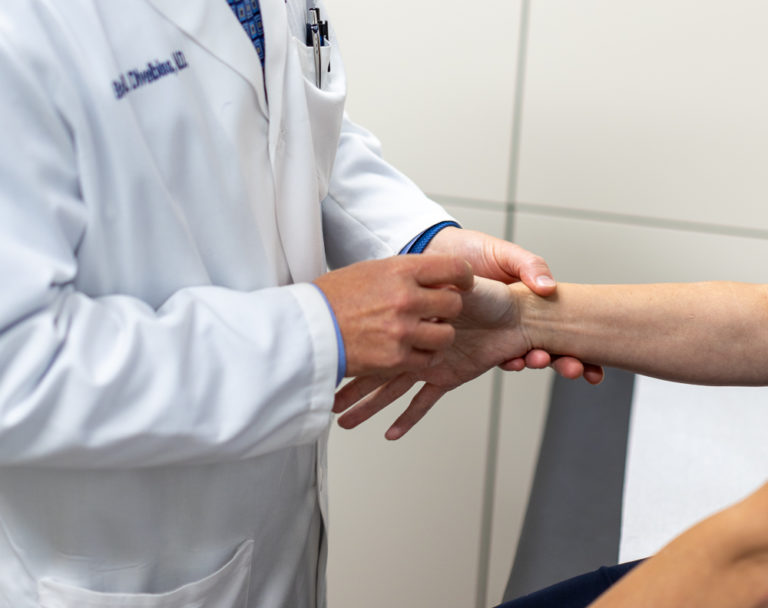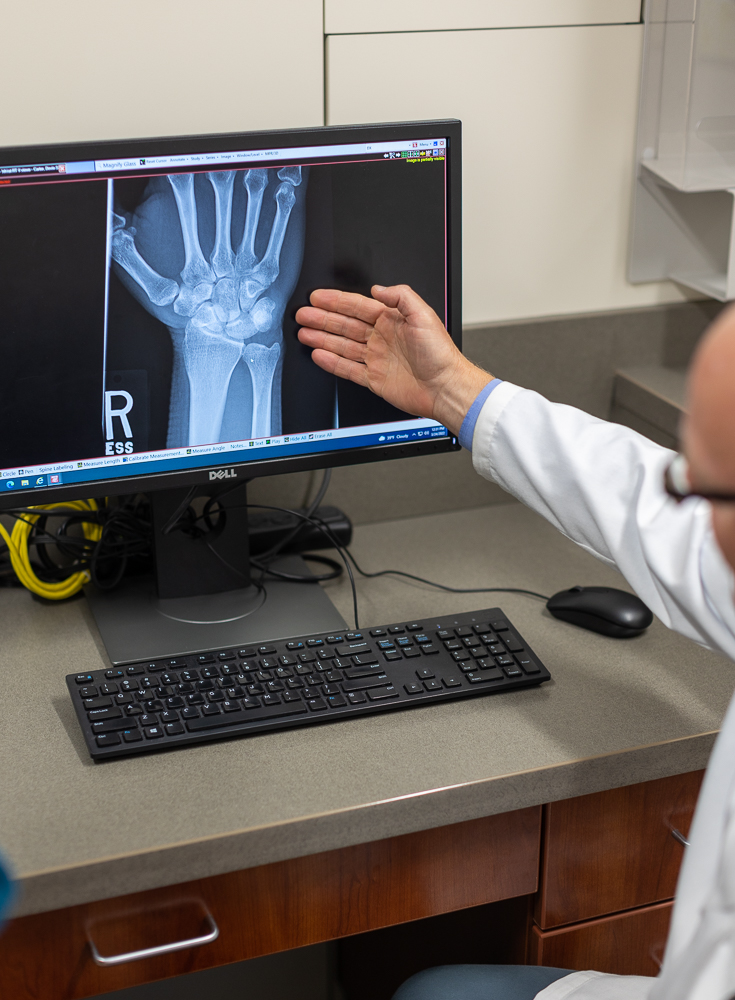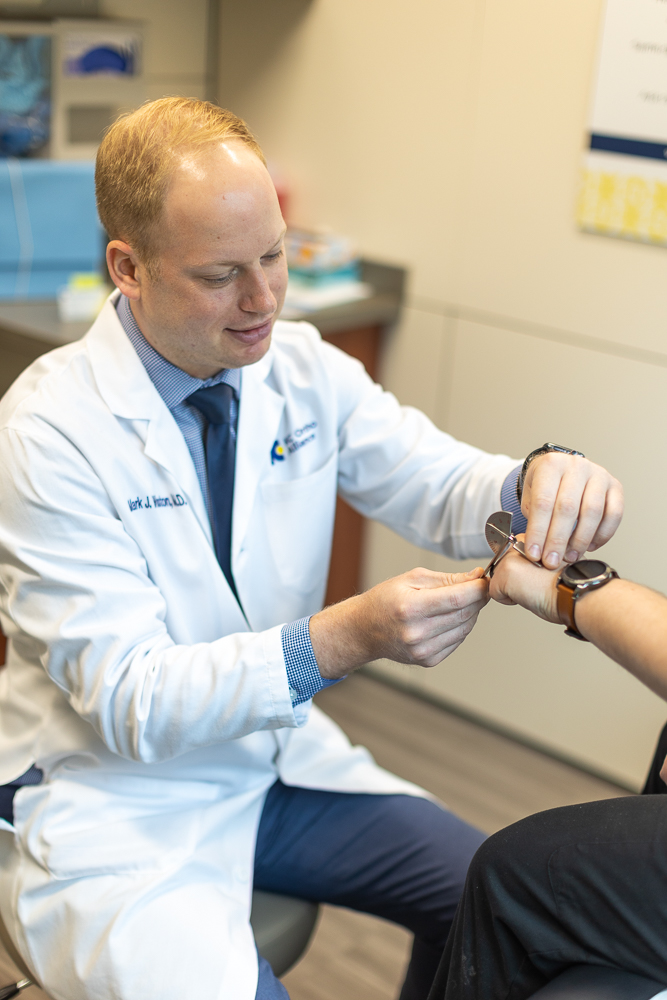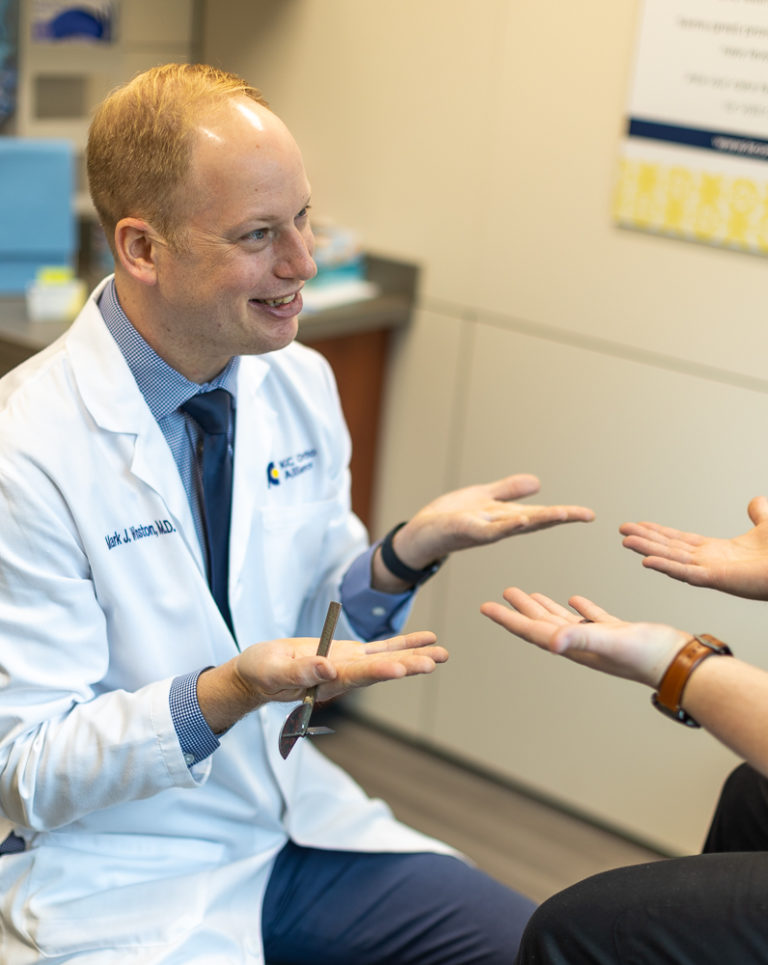Cyst Removal Release in Kansas City
Cyst Removal
Your Solution to
Hand & Wrist Discomfort.
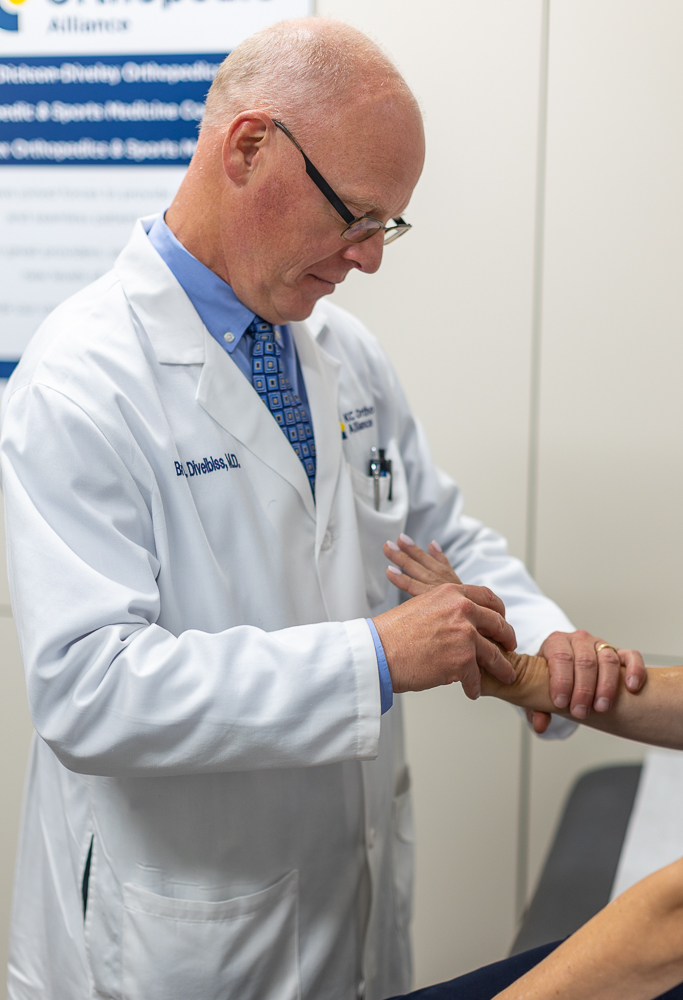
Understanding the Basics Behind Hand & Wrist Pain
What is Cyst Removal?
Most of us are familiar with how hand and wrist injuries normally occur. Chronic pain develops over time as a result of repetitive motions and poor form, and acute injuries can happen at any given moment. However, some issues are less known in terms of their origin.One of these is a ganglion cyst in the hand.
>Ganglions are fluid-filled, almost jelly-like cysts that appear as a mass or lump in the hand. They can appear just about anywhere on the hand, growing out of the tissues that surround the joint. Cysts are very common and in most instances they’re harmless. They can become problematic if they grow too large or impact mobility, leading to pain and reduced function.
If you’re dealing with a cyst in your hand or wrist, the highly skilled providers at Kansas City Orthopedic Alliance can help. We have several different treatment options to help guide you toward a solution. One of these options is cyst removal, which we perform at our clinics in the Kansas City area.
Your First Appointment for Hand & Wrist Injuries
Choosing a ganglion cyst removal in Kansas City is a decision that typically involves guidance from your primary care doctor and orthopedic physician. When you choose Kansas City Orthopedic Alliance, one of our highly-trained orthopedic hand and wrist specialists will conduct an initial evaluation to better understand your condition. After a complete review of your results, your provider will discuss whether cyst removal in Kansas City is the best treatment option for you.
What are some signs of the presence of a Ganglion Cyst? They may include:
- Prominent, palpable bump
- Usually round or spherical in shape
- Often firm or spongy
- Pain with movement
- Numbness/Tingling
- Lack of motion
- Weakness
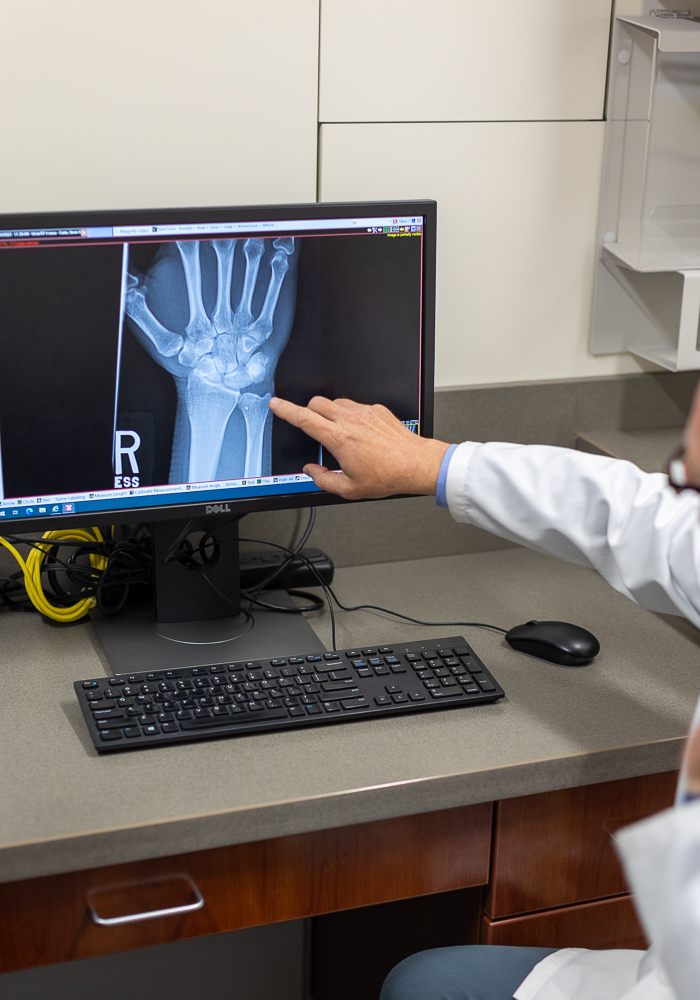
Kansas City Orthopedic Alliance hand & Wrist Assessment
Assessing the Injury
Determining the proper treatment process for hand and wrist injuries starts with an assessment from one of our experienced providers. You can think of hand and wrist pain as a spectrum, with some instances being more severe than others.
The KCOA orthopedic specialists always focus on each patient and their concerns before creating a treatment plan.
Therefore, during your initial appointment, we will often ask questions such as:
From there, we can decide what treatment option will align best with your needs and lifestyle goals.
- When did your cyst first appear?
- Was there an injury or trauma to the area that you can associate with the cyst forming?
- Does your pain currently limit you or your activities?
- Has your pain progressed or worsened recently?
- Have you noticed any change in your symptoms or the cyst that has made it more challenging to function?
- What are your lifestyle goals?
- How has the cyst affected those goals?
Examination
Once we’ve completed a proper assessment, your provider will often begin with a physical examination to help determine the origin point of your pain. In some cases, advanced testing may be required for a full diagnosis. This may include:
X-Ray
Also called radiographs, an X-ray captures a picture of the wrist. Orthopedic physicians may order an X-ray to rule out the possibility of a fracture (broken bone), osteoarthritis, or other bone-related conditions.
Magnetic Resonance Imaging (MRI)
MRI captures images of muscles, bones, ligaments, cartilage, and tendons to help provide information other tests can’t detail. During an MRI, you will lie on a table that slides into a tube-shaped scanner. The machine creates a magnetic field around you, using pulsed radio waves to form the MRI images.
Diagnostic Injection
A physician inserts a needle in the hip and injects medicine into the joint. In most cases, the provider uses a real-time X-ray (fluoroscopy) or ultrasound to see where to place the needle in the joint.
Symptoms
Common Signs and Symptoms of a Ganglion Cyst
Ganglion cysts can form in a variety of different sizes. Ganglion cysts generally aren’t very big and usually don’t cause a lot of disruption or pain. However they have the potential to cause pain if the cyst presses on the nerve.They can also cause issues with motion and function if they grow in a location where mobility is necessary.
Currently, medical experts aren’t entirely sure what causes ganglion cysts to form.This means that it’s difficult to determine the risk factors for their development. We do know that most ganglion cysts form in people between the ages of 20 and 40 and that arthritis and joint/tendon injuries may play a factor.
You can remove a ganglion cyst both surgically and non-surgically, and many patients seek removal when the pain becomes too much to handle or interferes with their range of motion.
Causes
Causes of Hand & Wrist Pain
The body has a number of different joints that all work in unison in order to function normally. However, all of these different working parts means that your hand and wrist can face a variety of potential injuries. The severity of your hand and wrist pain will vary depending on a few key factors, including both the location and the source of the problem.
As with many of the other joints in your body, both the hand and wrist are susceptible to acute injuries, it can be susceptible to injuries that occur acutely or more chronic conditions that build up over the years because of repetitive motions or poor form. The soft tissue of your hand and wrist, consisting of muscles, tendons, nerves, and ligaments, help to protect these joints and bones.
Whether you’re suffering from an acute or chronic injury, the hand and wrist specialists at Kansas City Orthopedic Alliance are here to assist. We’ll help you find the root cause of your pain and determine whether cyst removal is right for you or if you require a different treatment.
Treatment Alternatives
In most cases, surgery is not the first option for treatment at Kansas City Orthopedic Alliance. If we can treat your knee issues with more conservative treatments, we’ll choose those options. We typically exhaust all non-surgical options prior to recommending surgery.
Occupational/Physical Therapy
A trained therapist will focus on the issue that’s causing the pain or symptoms as well as the deficits that are present as a result of the injury. Stretches, strengthening exercises, manual soft tissue work, and modalities like hot and cold therapy may be used to help you recover.
Medications
Your doctor may recommend over-the-counter NSAIDs (Non-steroidal anti-inflammatory drugs, such as Advil) or prescription medications. Especially with NSAIDs, you should always talk to your doctor to ensure they are the right treatment for you.
Aspiration
Aspiration involves numbing the cyst and the surrounding area with a local anesthetic. Your provider then punctures the cyst with a needle to drain the fluid and reduce its size.
F.A.Q.
Frequently Asked Questions
Kansas City Orthopedic Alliance is here to help.
Our care is personal. Our team is knowledgeable. And we’re more available than ever.
With access to board-certified specialists across Kansas City, we have the tools to meet almost every musculoskeletal condition.
Our Locations
Overland Park, Kansas
10777 Nall Ave Suite 300 Overland Park, KS 66211Leawood, Kansas
3651 College Blvd. Leawood, KS 66211Kansas City, Missouri
Saint Luke's Medical Plaza #1 4320 Wornall Rd., Ste. 610 Kansas City, MO 64111Belton, Missouri
Belton Regional Campus 17067 S Outer Rd #301 Belton, MO 64012Blue Springs, Missouri
St. Mary’s Medical Center, Main Entrance 203 NW R.D. Mize Road, Suite 200 Blue Springs, MO 64014Shawnee Mission, Kansas
7450 Kessler St ste. 140 Merriam, KS 66204Prairie Star (Lenexa, Kansas)
Prairie Star 23401 Prairie Star PkwyBldg. B, Ste. 220 Lenexa, KS 66227


